Written by
Jenny ZengHow to Read & Write to NTFS Drive on M1/M2 Mac?
Summary: Is your NTFS drive not working on M1/M2 Mac? Here are 3 ways to read and write to NTFS-formatted drives on M1/M2 Mac. If you're in a hurry, simply download iBoysoft NTFS for Mac, then you can use the NTFS drive on M1/M2 Mac freely.
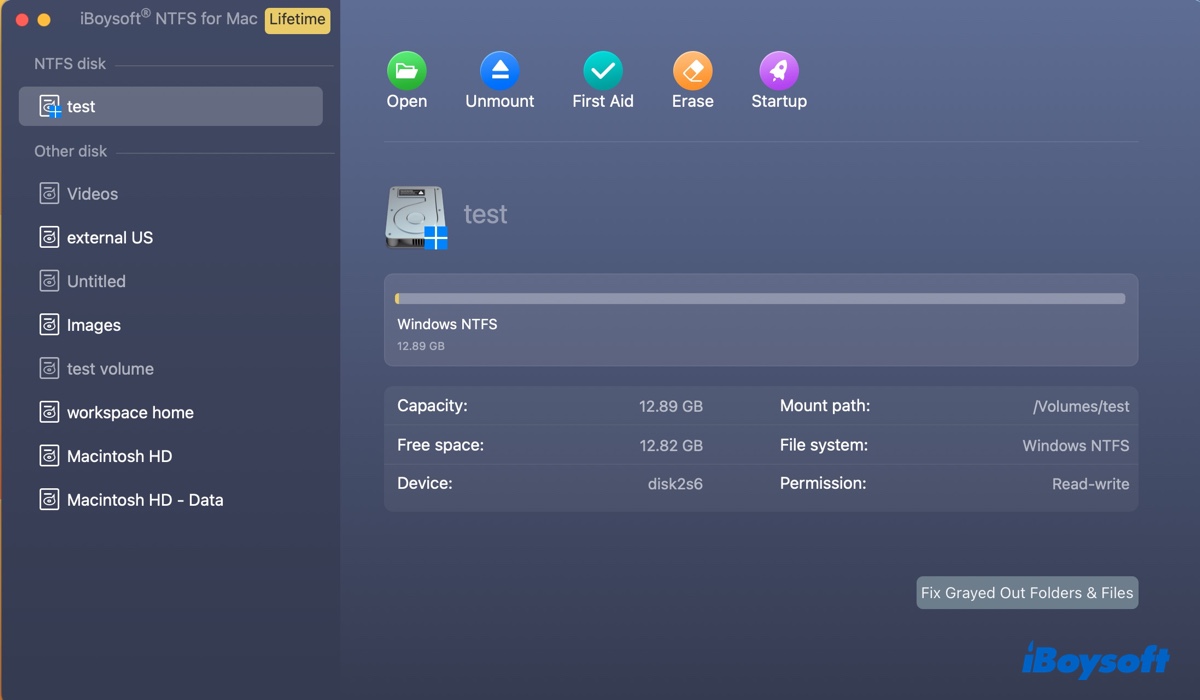
Many external storage devices, such as external hard drives, SD cards, USB flash drives, etc. come pre-formatted with the NTFS file system. While they work perfectly on a Windows PC, you will find yourself unable to rename, modify, delete, copy, or save files to the NTFS drives on an M1/M2 Mac.
Here, we'll explain the reasons why NTFS doesn't work on M1/M2 Mac and how to use NTFS on M1/M2 Mac effectively.
Table of Contents:
- 1. How to read & write to NTFS drive on M1/M2 Mac (Quick Summary):
- 2. Does NTFS work on M1/M2 Mac?
- 3. How to use NTFS on M1/M2 Mac?
- 4. FAQs about how to read/write to NTFS drive on M1/M2 Mac
How to read & write to NTFS drive on M1/M2 Mac (Quick Summary):
To read and write to an NTFS-formatted external drive on M1/M2 Mac, you can choose one of the following options.
| Read/write to NTFS on M1/M2 Mac | Effectiveness | Recommendation |
| 1. Use iBoysoft NTFS for Mac | High - Native read-write access to NTFS on M1/M2 Mac | |
| 2. Run commands in Terminal | Low - May damage the system; doesn't work on macOS Ventura | |
| 3. Erase NTFS in Disk Utility | Low - Delete all data on the drive |
To sum up, the best way to use NTFS on M1/M2 Mac with read & write access is to use iBoysoft NTFS for Mac. Click the button below to get the NTFS for Mac M1/M2 free download.
Does NTFS work on M1/M2 Mac?
The short answer is that NTFS only partially works on M1/M2 Mac.
By default, macOS can only read NTFS-formatted drives but not write to them. That's because NTFS is a proprietary file system owned by Microsoft, and Apple hasn't licensed the technology to allow write support in macOS.
In other words, you can open and read files on an NTFS-formatted drive on your Mac, regardless of whether it has the Intel chip or Apple Silicon (M1 & M2) chip. However, you can't change the drive's content due to the lack of write access.
Share the information to benefit other NTFS drive users.
How to use NTFS on M1/M2 Mac?
There are three ways to use NTFS on M1/M2 Mac with read and write access. You can install a reliable third-party NTFS driver, which is highly recommended, enable Apple's experimental NTFS-write support with command lines, or completely erase your NTFS drives with another file system.
Method 1: Read/Write to NTFS drive on M1/M2 Mac using iBoysoft NTFS for Mac
If your NTFS drive isn't working on M1 Mac, the best solution is to use iBoysoft NTFS for Mac.
It's one of the best NTFS drivers that grants you full read/write access to NTFS drives on an M1/M2 Mac, including the M2 Chip, M1 chip and the more advanced M1 Pro and M1 Max chips. It's easy to use, safe to install, and offers performances close to the drives formatted with native macOS file systems.
This NTFS for Mac (M1/M2) tool can also mount & repair your unmountable NTFS drives on M1/M2 Mac and format other drives to NTFS. It's compatible with Intel-based and M2 Macs as well, supporting operating systems ranging from macOS 13 Ventura, and macOS 12 Monterey to macOS 10.13 High Sierra.
What highlights this NTFS for Mac driver is its auto-mount ability, which automatically mounts your NTFS-formatted drives in read-write mode once it's connected. It's really efficient as you don't need to relaunch it after a reboot or reconnecting the NTFS drive.
Follow the steps below to use NTFS drive on M1/M2 Mac:
Step 1: Download iBoysoft NTFS for Mac for free.
#NTFS for M1 Mac #NTFS for M1 Pro Mac #NTFS for M1 Max Mac #best NTFS for Mac M1
#macOS Sonoma developer beta #macOS Monterey #macOS Ventura #mount NTFS on M1 Mac
Step 2: After it's installed, you can use your NTFS drive freely.
If your NTFS drive isn't mounting or showing up on the desktop or in Finder, take the following steps:
- Open the NTFS driver.
- Select your NTFS drive and click Open.
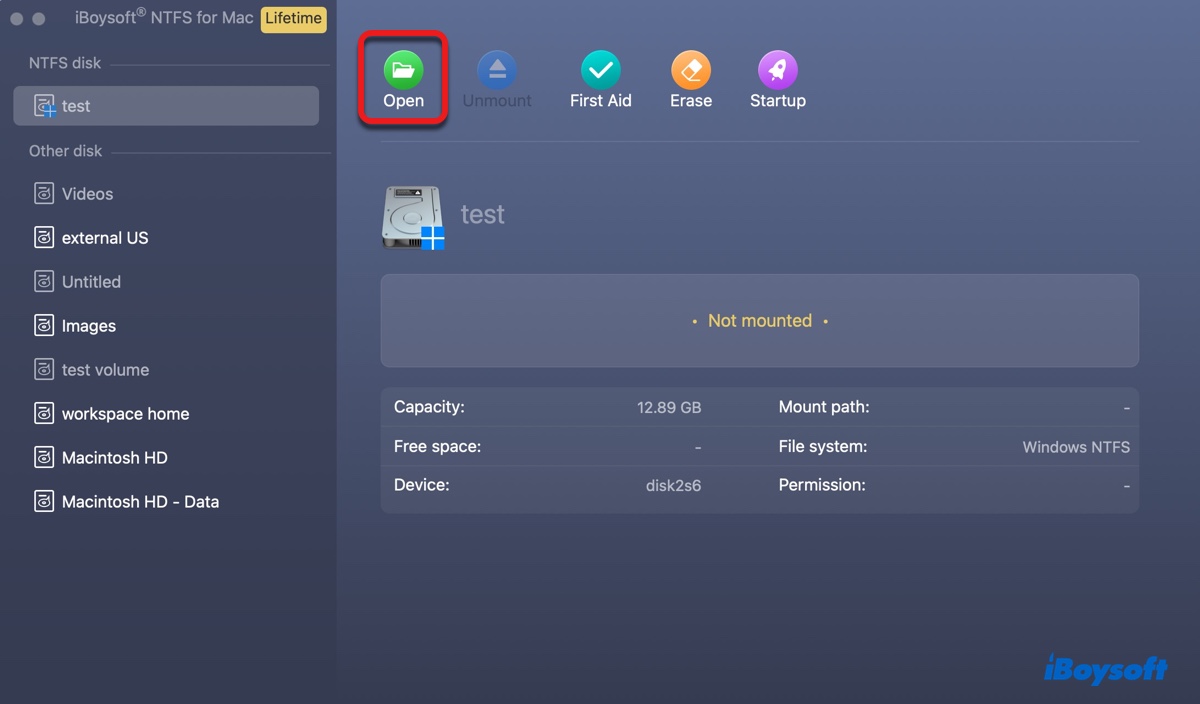
- If the NTFS drive still won't work, click "First Aid" > "Check disk" to repair it.
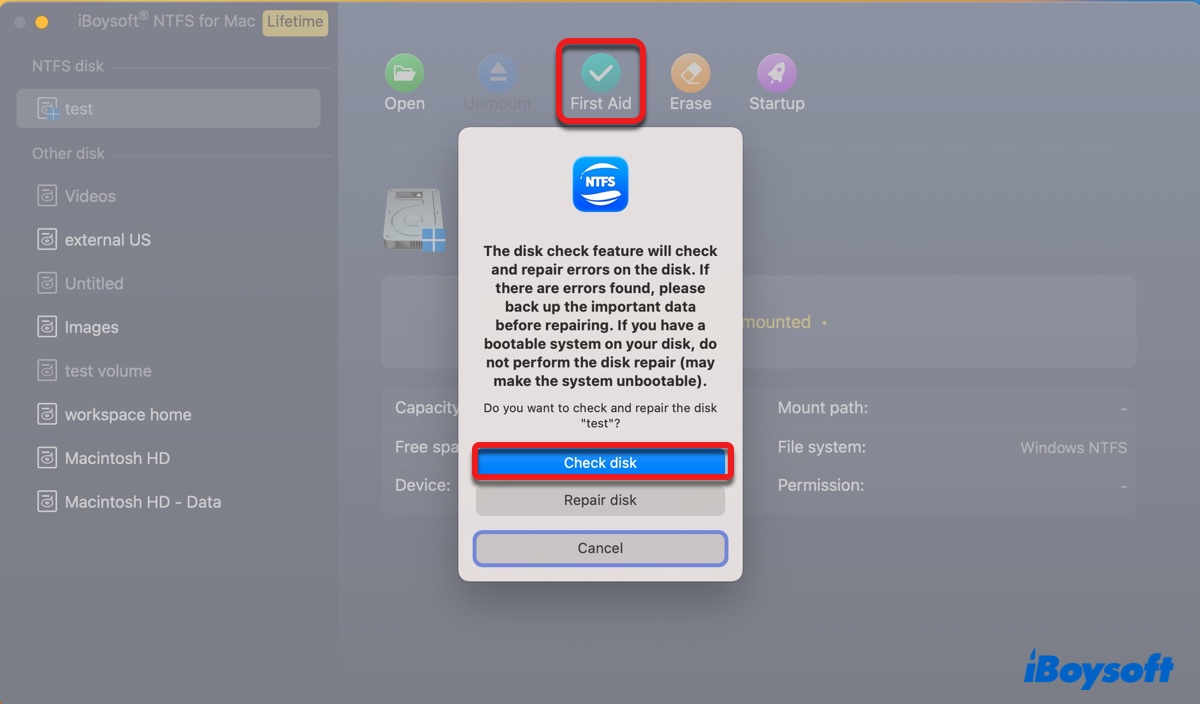
You should now be able to read and write to NTFS on your M1 Mac. Share your success with others.
Method 2: Enable Write access to NTFS drive on M1/M2 Mac via Terminal
There's experimental support for writing to NTFS drives on Macs running macOS Monterey and earlier (macOS Ventura has removed it.) It's disabled by default and requires executing commands in Terminal to be enabled.
It offers the possibility to enable write support to NTFS on Mac, however, it's not guaranteed to work and may potentially damage your system and corrupt the data.
Even if it does work, it only enables write support for the specific session. The next time you want to write to an NTFS drive on your M1/M2 Mac, you will need to run the commands again.
So, it's generally not recommended to do it that way. But if you want to try it out, take your own risk and follow the steps below:
- Launch Terminal from the Applications/Utilities folder.
- Type the following command and hit the Enter key.sudo nano /etc/fstab
- Input your admin password and press Enter. (The password won't echo to the screen.)
- This will open the /etc/fstab file in the nano text editor and allows you to make changes.
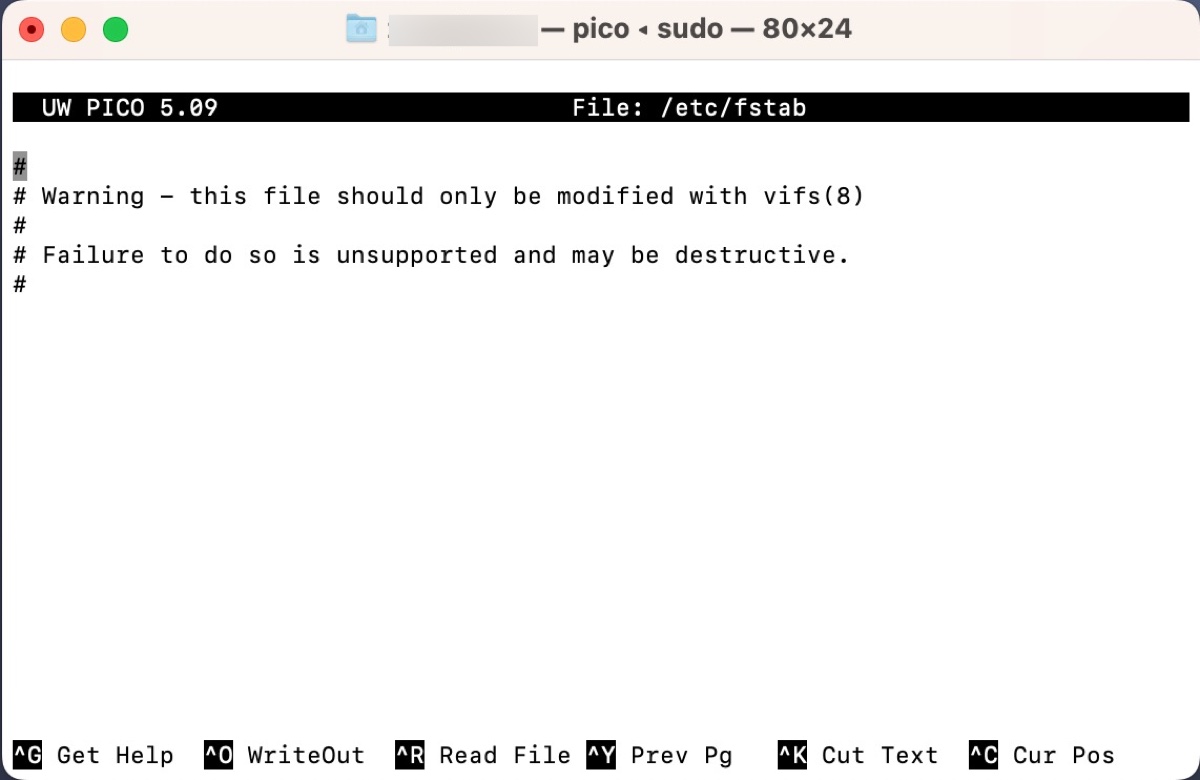
- Use the arrow key to move the cursor to a new line at the bottom of the file.
- Type the following command into the new line, replacing "NAME" with the name of your drive:LABEL=NAME none ntfs rw,auto,nobrowse
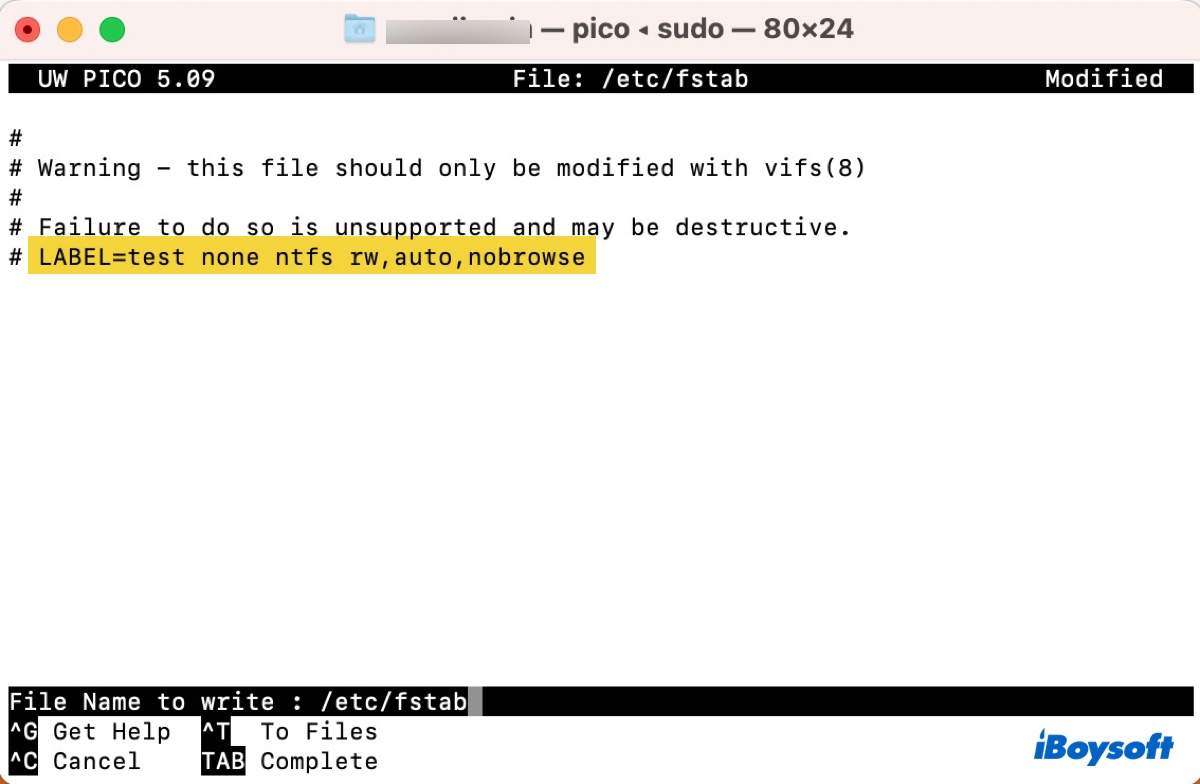
- Press Ctrl + O to write the changes to your NTFS drive.
- Press the Enter key and then Ctrl + X to exit nano.
After that, try if you can read and write to NTFS-formatted drives on your M1/M2 Mac.
Method 3: Erase NTFS drive to another file system
Another way to bypass NTFS issues on M1/M2 Mac is to completely avoid the format by erasing your NTFS drives with another file system that macOS has both read and write support, such as APFS, HFS+, exFAT, or FAT32. Note that this will remove all data on your drive, so make sure the important data is backed up before preceding.
- Open Disk Utility from the Applications/Utilities folder.
- Click View > Show All Devices to reveal the physical disk.
- Select your NTFS drive, the top-level one, usually labeled with the manufacturer's name.
- Click Erase.
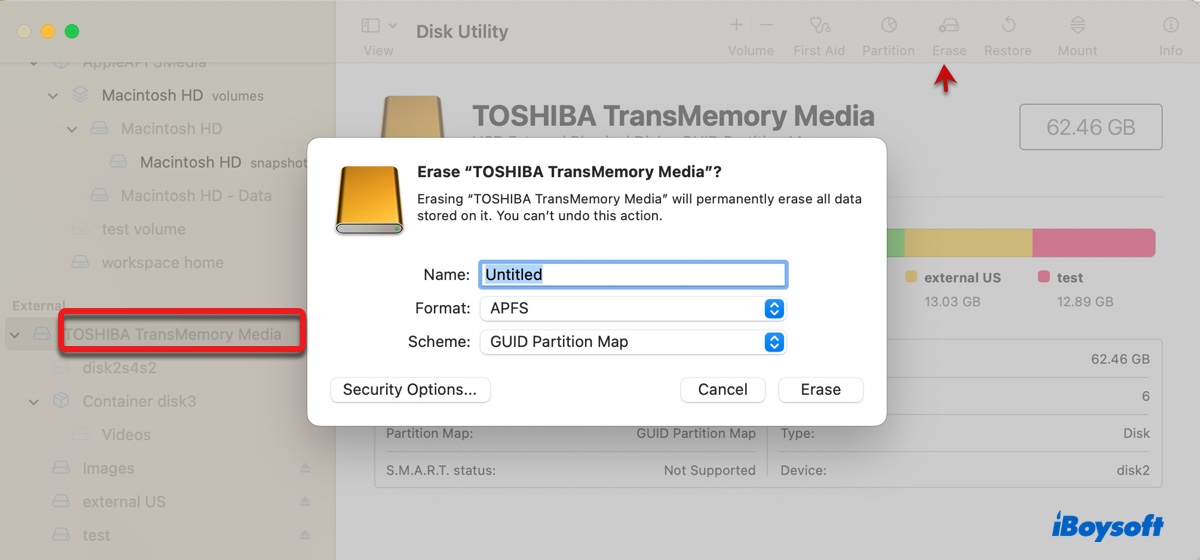
- Enter a name for the drive.
- Choose a proper file system. (Select APFS or HFS+ when working with Mac only; choose exFAT or FAT32 when working with both Windows and macOS.)
- Select GUID Partition Map as the scheme.
- Click Erase again.
Which solution did you take? Share this article to help others use NTFS on M1/M2 Mac.
FAQs about how to read/write to NTFS drive on M1/M2 Mac
To open NTFS drive on M1/M2 Mac, just double-click its drive icon on the desktop or select the drive in Finder's "Locations" sidebar.
Yes, Apple's Mac computers can read NTFS drive. However, they can't write to it.
The best NTFS for Mac (M2 & M1) is iBoysoft NTFS for Mac. It's a professional NTFS driver that can enable read and write support to NTFS drive on M2, M1, and Intel-based Macs.
NTFS is a format that macOS can only read but not write to. To gain write access to an NTFS drive on Mac, you need to employ a third-party NTFS for Mac driver.
If you need to use a drive on both Windows and macOS, exFAT may be a better choice, as it's compatible with both operating systems. However, exFAT drives may have mounting issues on Mac. Besides, NTFS is generally faster than exFAT in reading and writing to a drive on Windows. So, if you value read and write speeds on Windows, NTFS is probably a better choice.
If you plan to use a drive on Mac only, APFS is probably the best choice as it's the most advanced file system on Mac and is optimized for SSD.

